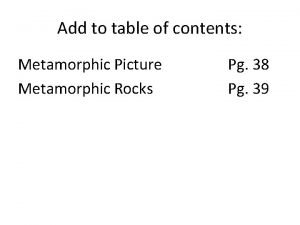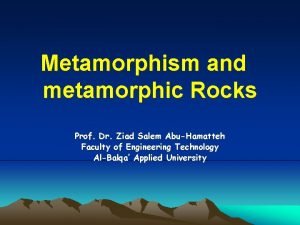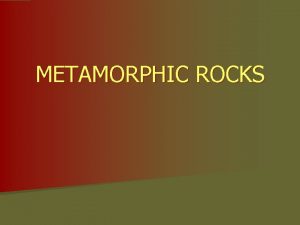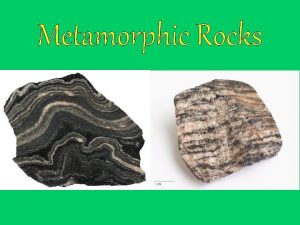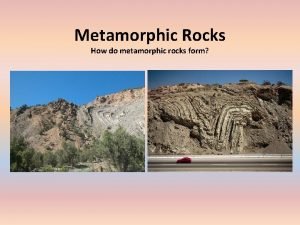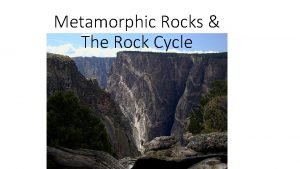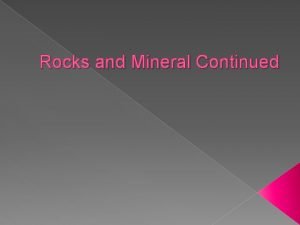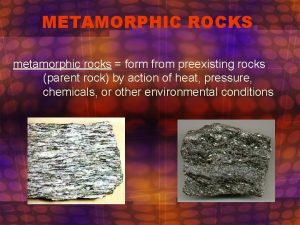Tectonic of metamorphic rocks According to plate tectonic







- Slides: 7

Tectonic of metamorphic rocks According to plate tectonic theory, the environments at which metamorphic rocks formed are: -

1 -Mid –oceanic ridge (MOR) The metamorphism was happened by hydrothermal solutions causing sea floor metamorphism The parent rocks of sea floor metamorphism was basalt, dolerite and gabbro which found at beneath mid oceanic ridge as a result of high geothermal. The metabasalt of sea floor metamorphism have no schistosity texture, or have a simple schistisity textures, the metabasat have relics texture because the crystallization was not complete through the metamorphism. The type of metamorphism at sea floor is burial metamorphism related to zeolite and green schist facies.

The metabasalt within green schist facies characterized by Have the same chemical composition( abyssal tholeiite) Increasing H 2 O contain Decreasing Ca. O contain Variation in Si. O 2 contain

The metabasalt within zeolite facies characterized by Increasing Na 2 O contain, which from sea water by metasomatism The abyssal tholeiite was changed as a result of hot fluid flow through the oceanic crust. Decreasing of Ca. O contain, which increased chlorite and formed quartz –chorite veins. The metagabbro which found under the metabasalt, also have relic textures and metamorphosed within green schist and amphibolites facies, which indicate that metagabbro occur in deep area of mid oceanic ridge.

Kurdistan Example The subvolcanic rocks of mawat ophiolite is an example of mid oceanic ridge metamorphism, which characterized by This rocks have igneous appearances with metamorphic minerals Increasing Na 2 O contain as result of reactions with sea water, and formed ferrian pargasite and oligoclase. The assemblage ferrian pargasite and oligoclase indicate that this rocks occur within transition zone betwee. Amphibolite and green schist facies

The metamorphism of these rocks within mid oceanic ridge conditions because No schistosity texture No peristerite gap on oligoclase, which separate between green schist and amphibolites facies, because of low pressure. Decreasing of glaucophane contain Mineral assemblage (ferrian pargasite and oligoclase) formed at condition more than 500 o. C and 1 Kbars. The geothermal gradient was about 140 o. C/Km, this indicate metamorphism condition near mid oceanic ridge.

2 -collision zones: collision between continent with continent. The orogenic belt formed as result of two continents moved toward each others, the continental crust have double thickness because of folding and thrusting


